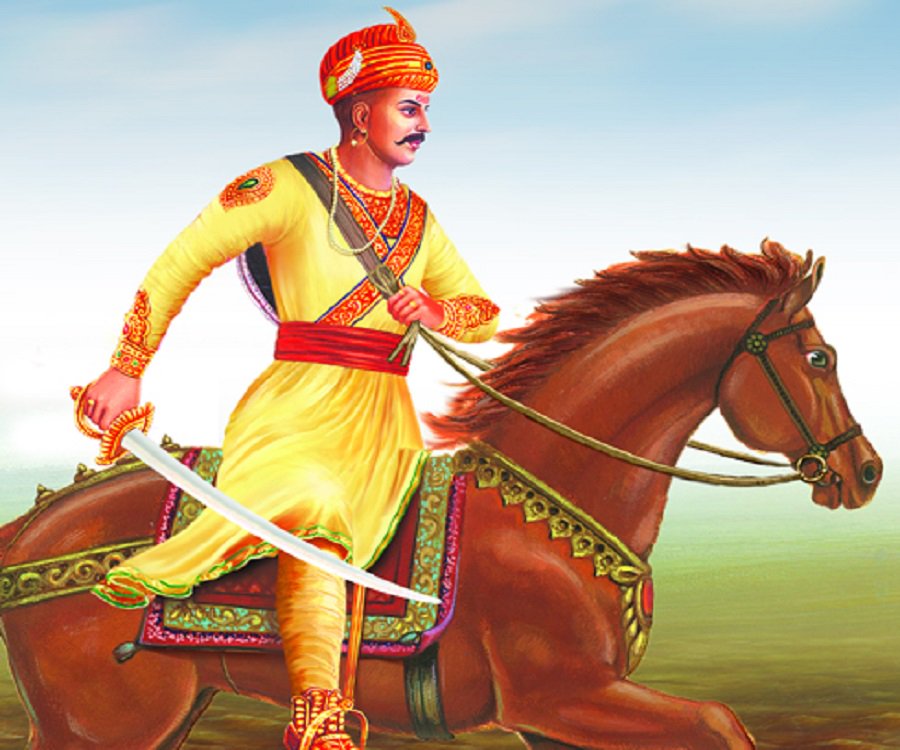Baji Rao (18 August 1700 – 28 April 1740) was a general of the Maratha Empire in India. He served as Peshwa(Prime Minister) to the fifth Maratha Chhatrapati (Emperor) Shahu from 1720 until his death. He is also known by the name Bajirao Ballal.
Birth :18 August 1700
Birth Place : Bhat family of Kokanastha Chitpavan Brahmin lineage.
Father’s Name : Balaji Vishwanath
Mother’s name : Radhabai Barve
Spouse(s) : Kashi Bai and Mastani
Children : Balaji Bajirao ,Raghunath Rao, Janardhan Rao Shamsher Bahadur
Brother’s Name : Chimaji Appa
His father Balaji Vishwanath was the first Peshwa of Chhatrapati Shahu; his mother was Radhabai Barve. Baji Rao had a younger brother Chimaji Appa and two sisters, Bihubai Joshi and Anubai Ghorpade. The eldest of his sisters was married into a Deshastha family. He spent his childhood in his father’s newly acquired fiefdom of Saswad.
Bajirao would often accompany his father on military campaigns. He was with his father when the latter was imprisoned by Damaji Thorat before being released for a ransom. When Vishwanath died in 1720, Shahu appointed the 20-year old Baji Rao as the Peshwa. He is said to have preached the ideal of Hindu Pad Padshahi(Hindu Empire)
Shaniwarwada palace fort in Pune, it was built as the seat of the Peshwa rulers during Bajirao’s reign.
The twenty year old Bajirao was appointed Peshwa in succession to his father by Chhatrapati Shahu.
He was appointed as the Peshwa at a young age had evoked jealousy from senior officials like Naro Ram Mantri, Anant Ram Sumant and Shripatrao Pant Pratinidhi. This led Bajirao to promote as commanders young men like himself who were barely out of teens such as Malhar Rao Holkar, Ranoji Shinde, and the Pawar brothers. Also, these men did not belong to families that held hereditary Deshmukhi rights under the Deccan Sultanates
Nizam rebelled against the order, resigned as the Vizier and marched towards Deccan. The emperor sent an army against him, which the Nizam defeated in the Battle of Sakhar-kheda. In response, Mughal emperor was forced to recognize him as the viceroy of Deccan. The Marathas, led by Bajirao, helped Nizam win this battle. In fact, for his bravery in the battle, Baji Rao was honored with a robe, a mansabdari of 7,000, an elephant and a jewel. After the battle, Nizam tried to appease both the Maratha Chhatrapati Shahu as well as the Mughal emperor. However, in reality, he wanted to carve out a sovereign kingdom and considered the Marathas his rivals in the Deccan
On August 27, 1727, Baji Rao started a march against Nizam. He raided and plundered several of Nizam’s territories, such as Jalna, Burhanpur and Khandesh. While Bajirao was away, Nizam invaded Pune, where he installed Sambhaji II as Chhatrapati. He then marched out of the city, leaving behind a contingent headed by Fazal Beg.
Baji Rao moved his base of operations from Saswad to Pune in 1728 and in the process laid the foundation for turning what was a kasba into a large city. Bajirao also started construction of Shaniwar Wada on the right bank of the Mutha River. The construction was completed in 1730, ushering in the era of Peshwa control of the city
– Campaign against the Nizam
– Malwa campaign
– Bundelkhand campaign
– Gujarat campaign
– Campaign against Siddis
– March to Delhi
– Against the Portuguese
Baji Rao died on 28 April 1740, at the age of 39 of a sudden fever, possibly heat stroke, while inspecting his jahgirs. At that time, he was en route Delhi with nearly 100,000 troops under his command at his camp in the Khargone district, near the city of Indore. He was cremated on the same day at Raverkhedi on Narmada River.
The Scindias built a chhatri as a memorial at this place.The memorial is enclosed by a dharmashala. The compound has two temples, dedicated to Nilkantheshwara Mahadeva(Shiva) and Rameshvara(Rama).

